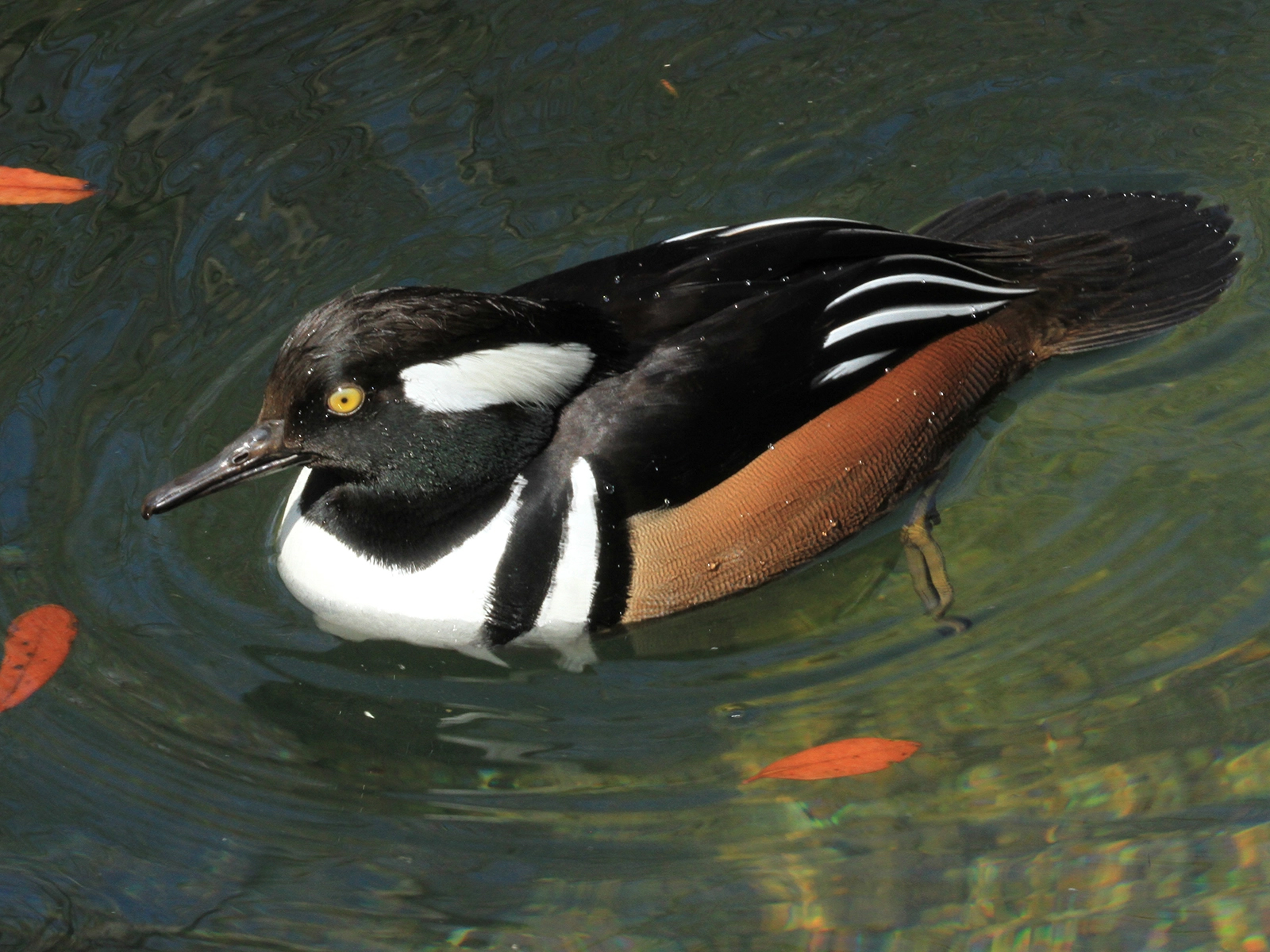Hooded Merganser
Lophodytes cucullatus
Class
Aves
Order
Anseriformes
Family
Anatidae
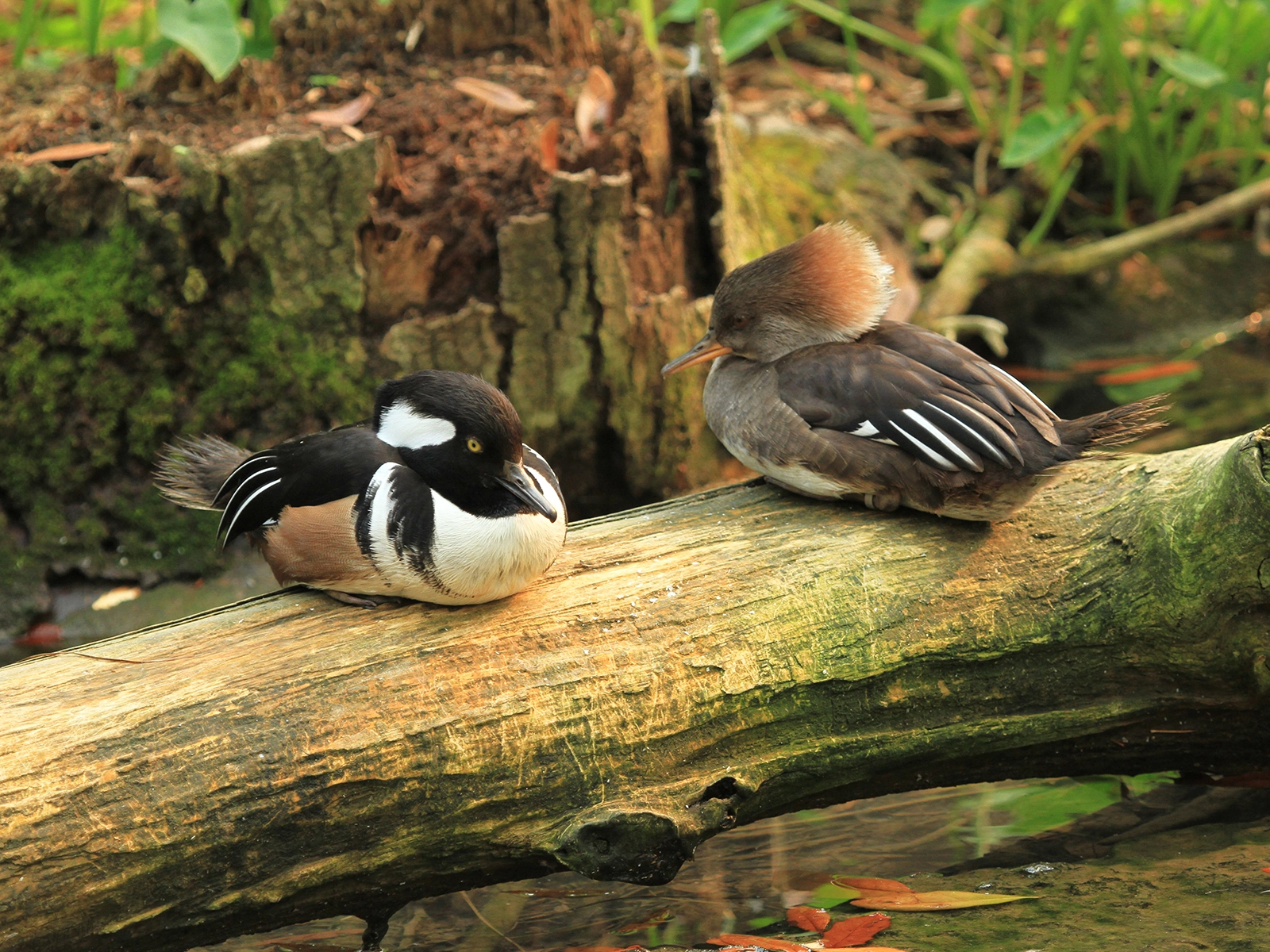
Aves
Anseriformes
Anatidae
Southern Canada thorugh the United States
Length: 15 - 20 in
Wingspan: About 2 ft
Weight: 1 -2 lbs
Swamps, ponds, marshes, slow-moving rivers
Clutch of 5 - 13 eggs
Incubation: 26 - 41 days
Fish, crawfish, frogs, mud crabs, clams, aquatic insects
Least Concern
They have a nictating membrane (a transparent eyelid) that protects their eyes and enables them to see better while diving underwater. Hooded mergansers can chase fish underwater for up to two minutes.
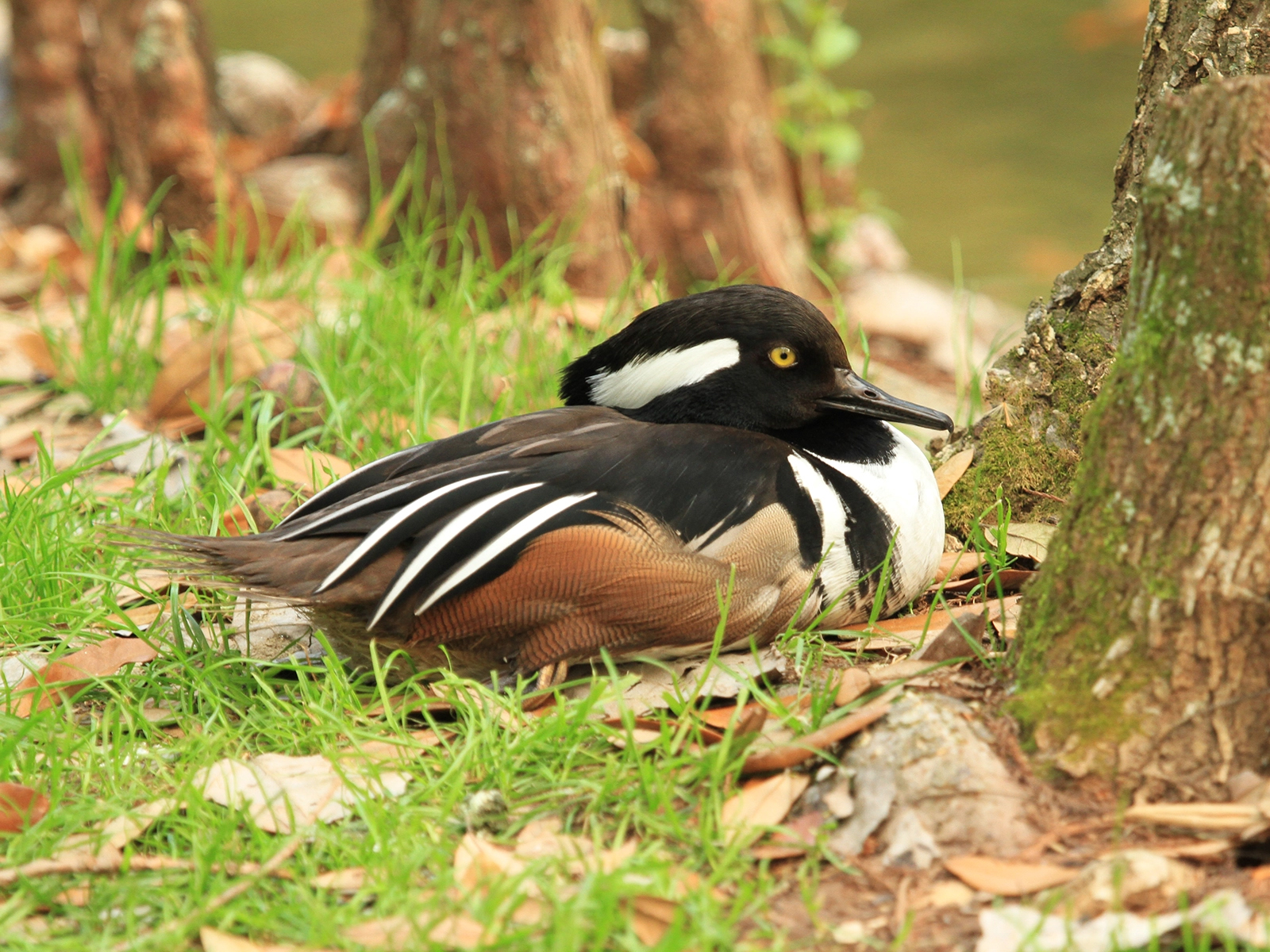
The male, called a drake, is black and white with tawny brown sides and flanks. A large, white, fanlike crest surrounded by black atop its head is its dominant characteristic. The male has a black bill, bright yellow eyes and dull yellow feet.
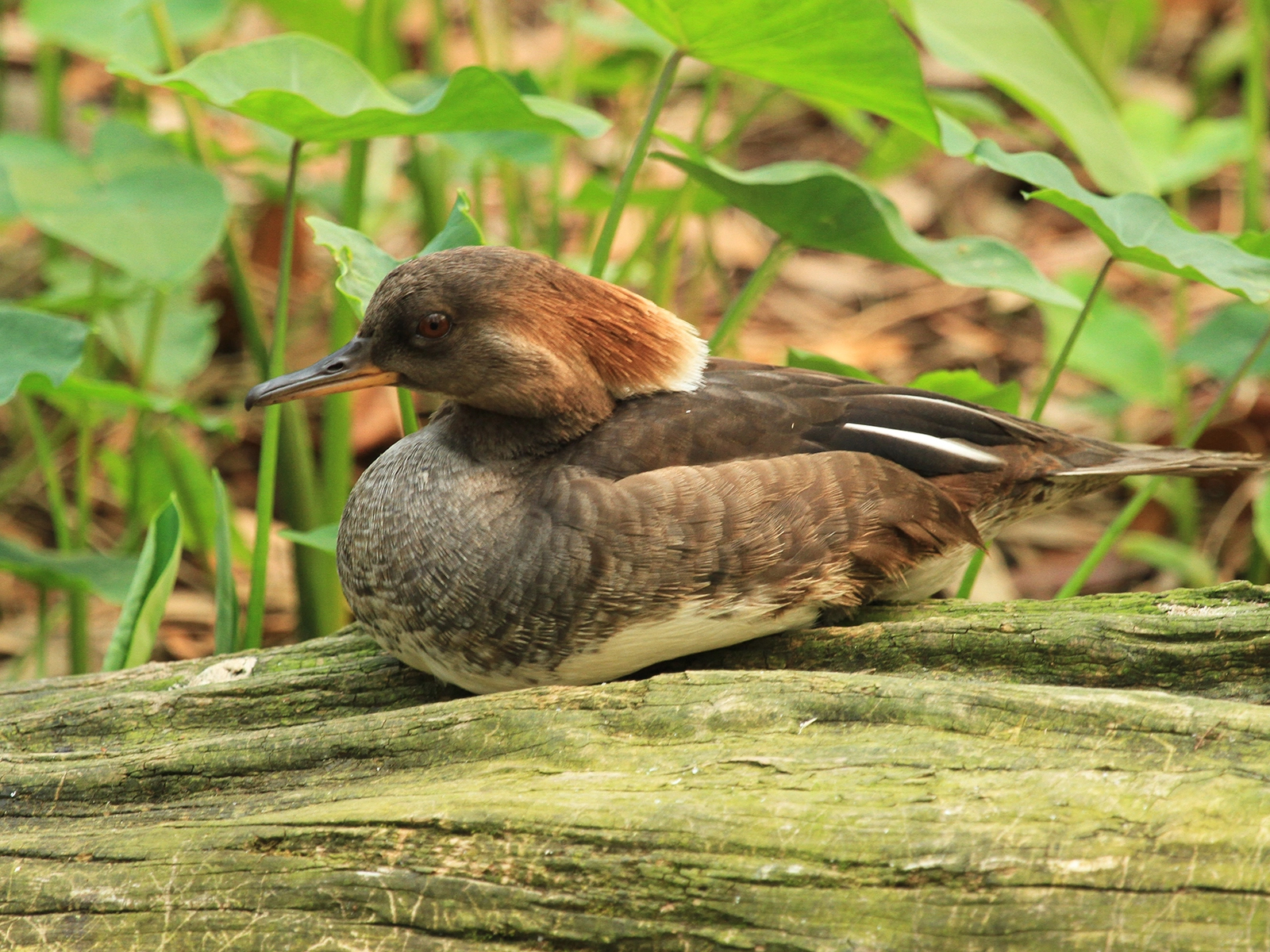
Females, called hens, have russet-brown heads with a backward slanted crest that is considerably smaller than the male's. They have dusky brown backs with gray chests and sides. The female has a black upper bill edged with orange. The lower bill is yellow, the eyes are brown and the feet are green.
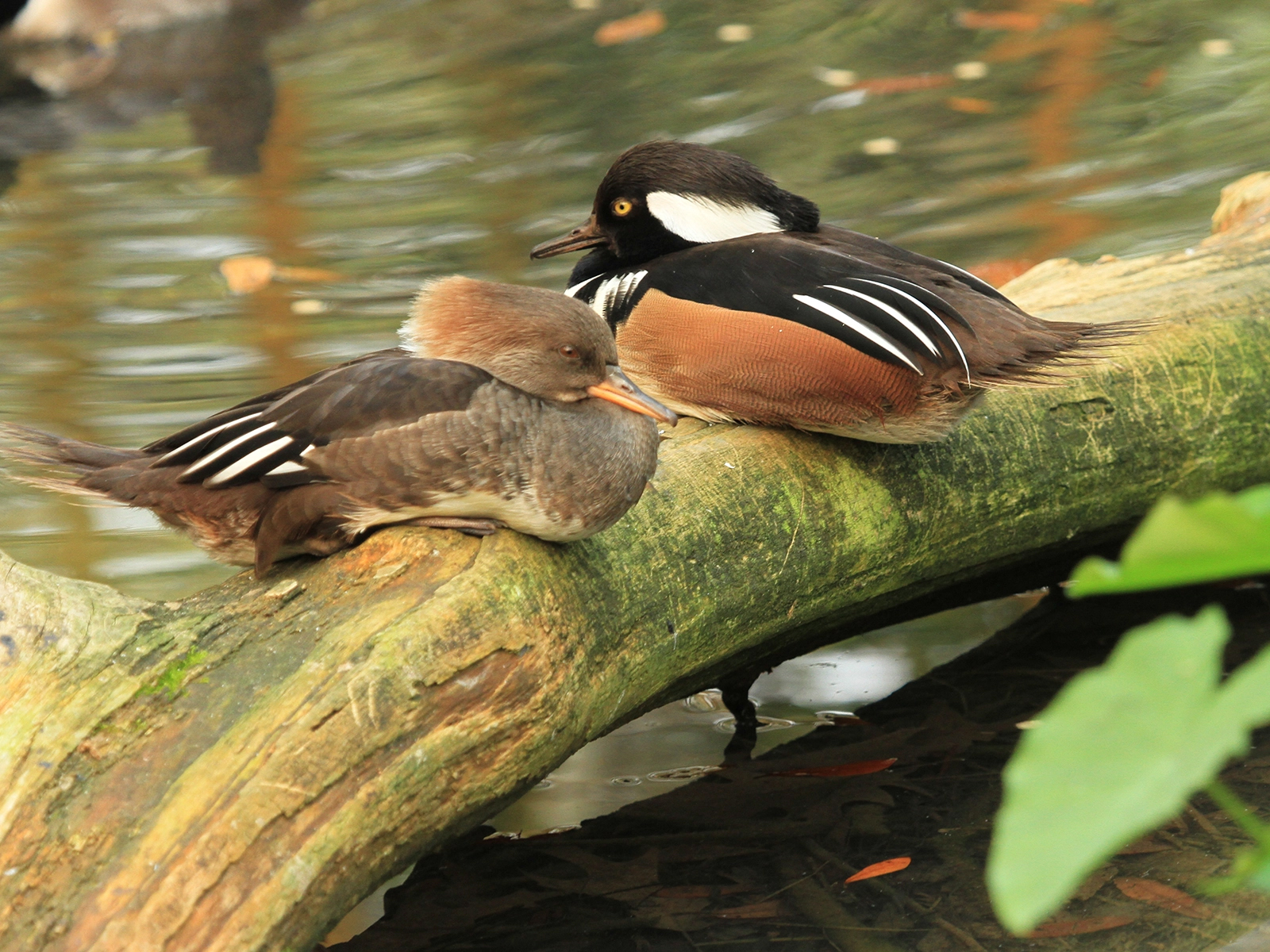
Unlike the beaks of most waterfowl, theirs are long and serrated to help them hold on to slippery fish.
Hooded Mergansers are currently classified as Least Concern and have healthy, stable populations. However, many other North American waterfowl face threats like habitat loss and degredation.
Protect and Restore Wetland Habitats. Waterfowl depend entirely on wetlands—marshes, swamps, ponds, and rivers—for feeding, nesting, and raising young. Reducing your household water use lessens the strain on local water resources. Avoiding the excessive use of lawn chemicals (fertilizers, pesticides) keeps runoff from entering storm drains and polluting the waterways and wetlands where ducks feed.
